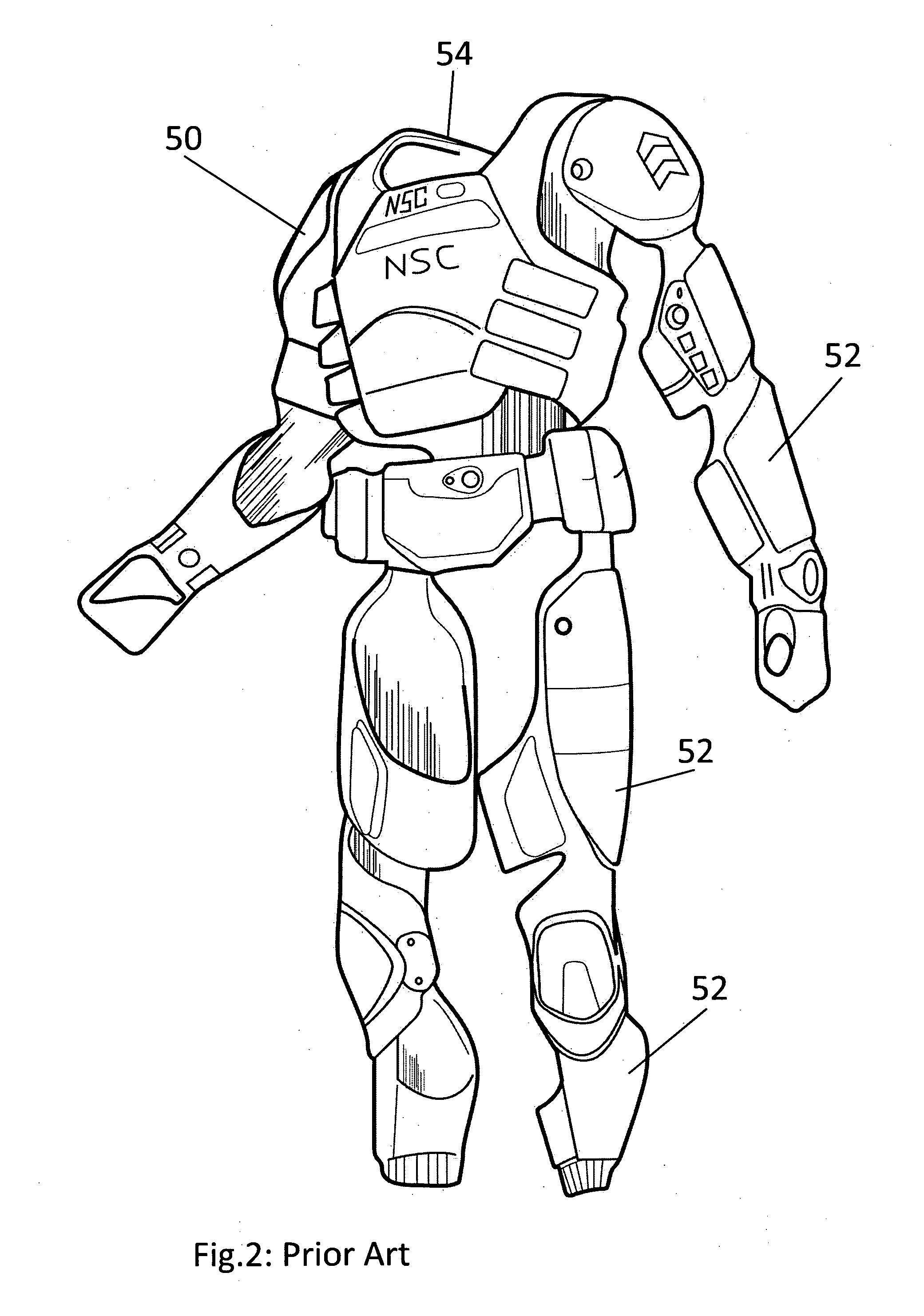Articulated body armour
a technology of body armour and articulation, which is applied in the direction of breathing protection, protective garments, clothing, etc., can solve the problems of increasing fatigue, affecting restricting the free movement of clothing, so as to improve the overall performance of the wearer, less physiological stress, and less restrictive movement
- Summary
- Abstract
- Description
- Claims
- Application Information
AI Technical Summary
Benefits of technology
Problems solved by technology
Method used
Image
Examples
Embodiment Construction
[0032]Referring to FIG. 1 there is shown an exploded view of prior art body armour system 20 in accordance with WO 03 / 027600. Essentially, left hand and right hand side panels 22, 24 (made from soft armour) are coupled together using front 26 and rear 28 hard armour plates that align and marginally overlap with edges of (and affix to) the side panels 22, 24. The front plate 26 may include overlapping plates 26a, 26b, if desired, to extend the overall amount of torso protection. The side panels 22, 24 include integrally formed shoulder straps 30, 32 that loop over from the rear to permit attachment 36 to a front-side flank to form holes 40, 42 through which a wearer may extend their arms. Foam pads 44, 46 are positioned against an inner surface of the soft armour to effect spacing of the soft armour from the body of a wearer.
[0033]In FIG. 2 an all-over body armour system 50 is shown. In what can best be described as a Star Wars “Stormtrooper” approach, a rigid exoskeleton made up of ...
PUM
 Login to View More
Login to View More Abstract
Description
Claims
Application Information
 Login to View More
Login to View More - R&D
- Intellectual Property
- Life Sciences
- Materials
- Tech Scout
- Unparalleled Data Quality
- Higher Quality Content
- 60% Fewer Hallucinations
Browse by: Latest US Patents, China's latest patents, Technical Efficacy Thesaurus, Application Domain, Technology Topic, Popular Technical Reports.
© 2025 PatSnap. All rights reserved.Legal|Privacy policy|Modern Slavery Act Transparency Statement|Sitemap|About US| Contact US: help@patsnap.com



